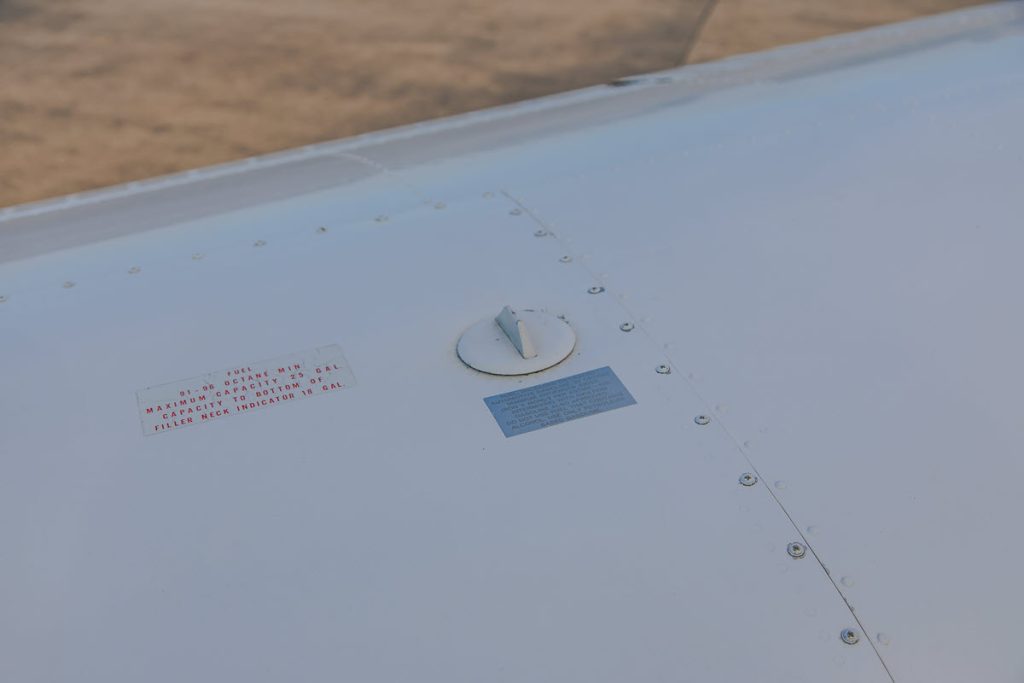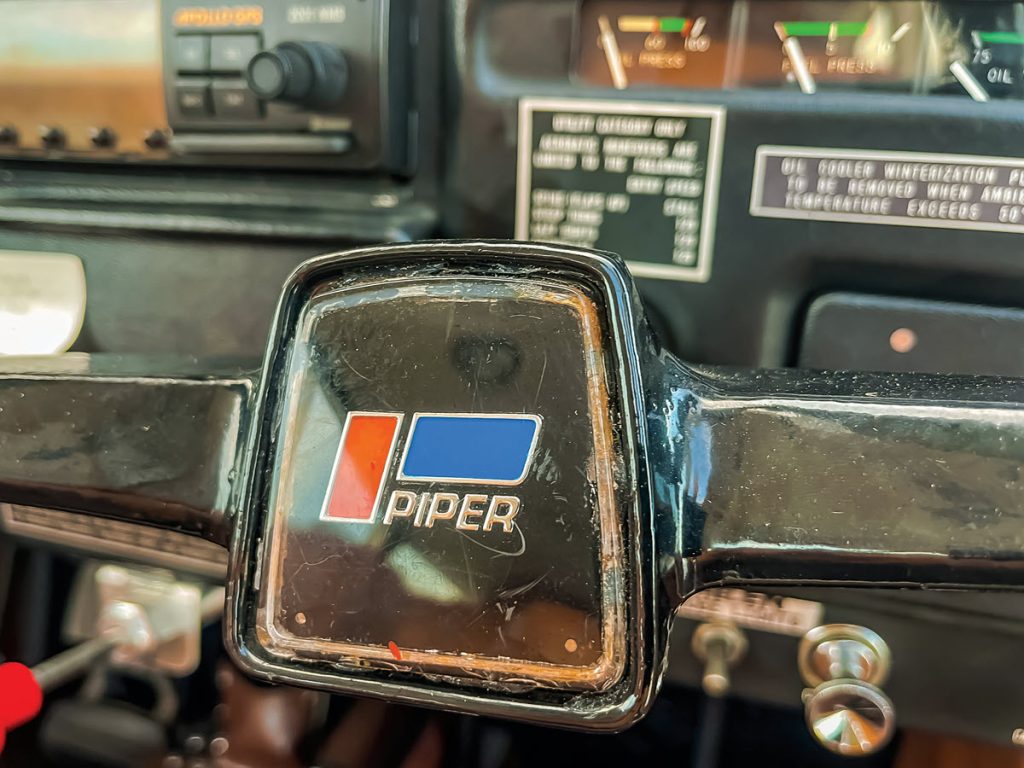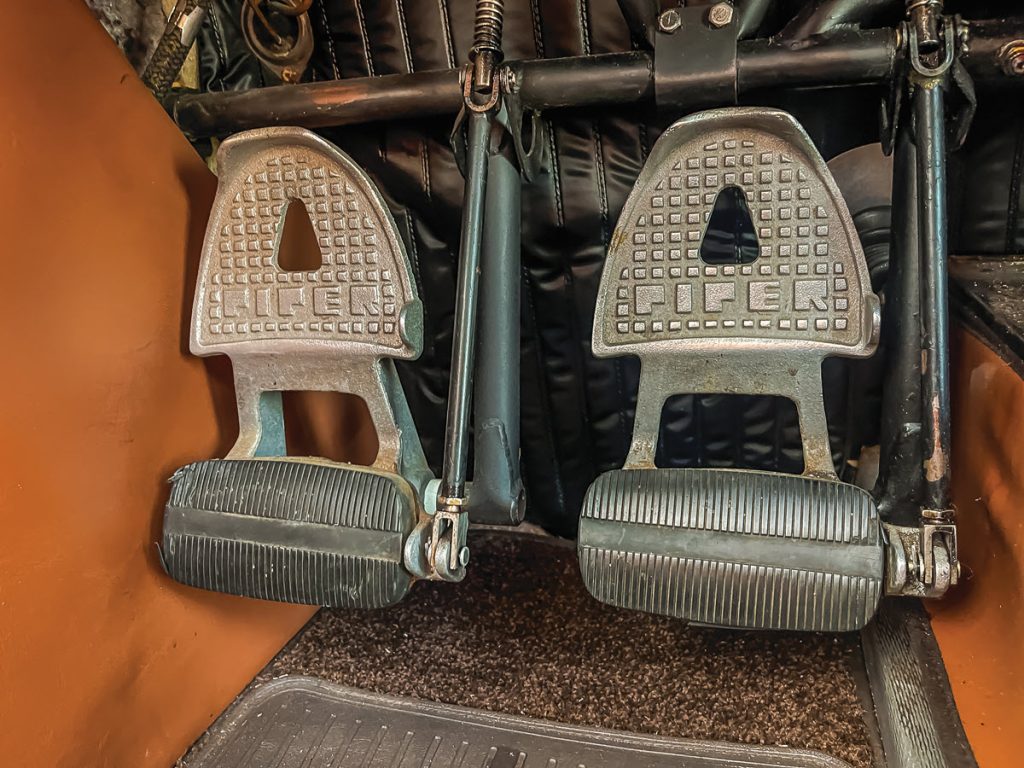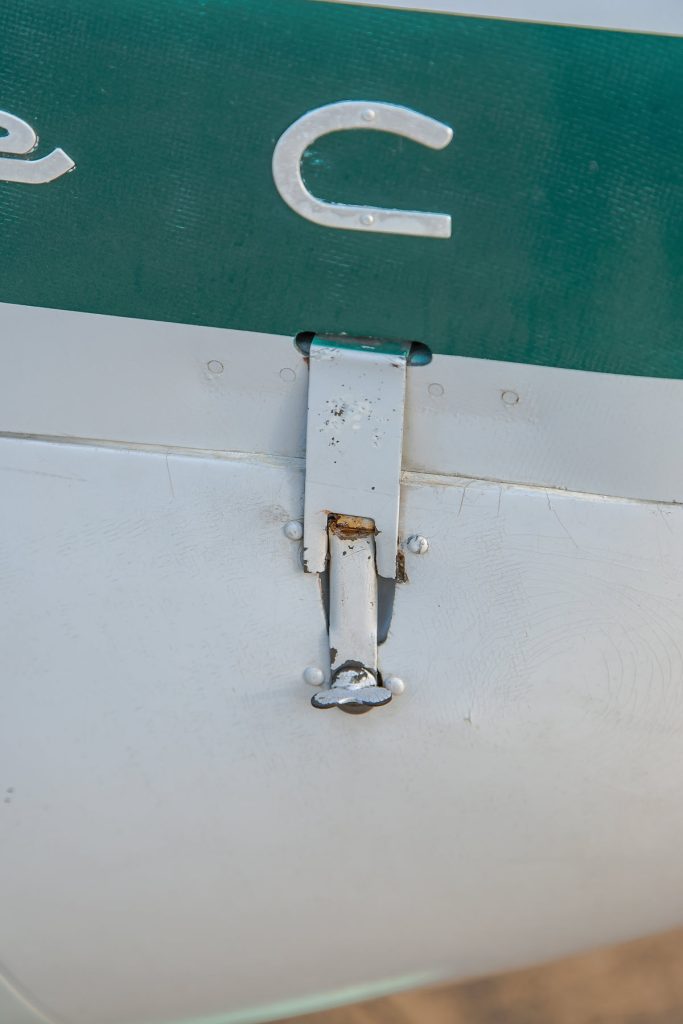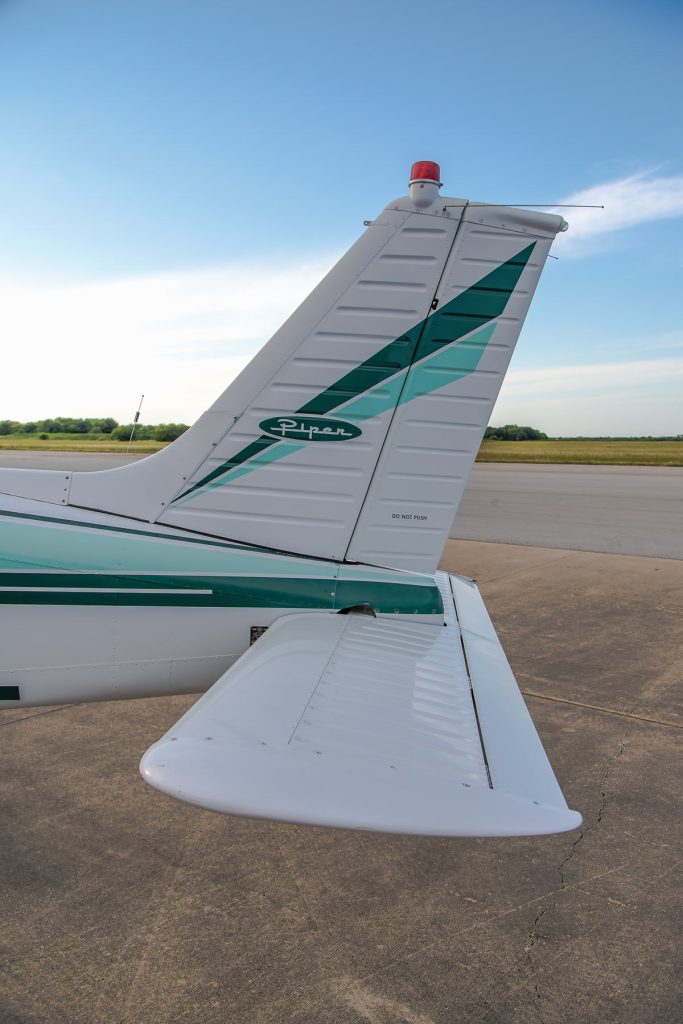Tim Fitzgerald’s 23 Years With His PA-28-180
By Greg Seubert
If Bruce Springsteen was born to run, then Tim Fitzgerald was born to fly. When Tim does fly, it’s usually in a 1967 PA-28-180 Cherokee that the Pittsburgh native has owned for more than 20 years.
“My Piper and I have been around,” Tim said. “I’ve owned my Piper for about 23 years now and have been very happy with it. When I first bought it back in 2000, I was living in Kansas and decided to take a trip around the eastern half of the country.” That trip included stops at Kitty Hawk, North Carolina, site of Wilbur and Orville Wright’s first successful airplane flights in December 1903, and Piper Aircraft’s factory in Vero Beach, Florida.
“Kitty Hawk was largely a destination of opportunity. It just seemed like an obvious stop to make while I was flying between Newport News, Virginia and Orlando, Florida, which were both places where I was going to be visiting friends. I mean, what’s the obvious thing for an aerospace engineer to do while flying his own airplane past the birthplace of powered aviation? Land at Kitty Hawk, of course — especially when someone went to all the trouble of providing a nice, paved runway instead of a wooden rail in the sand like the Wright Brothers had to use!
“The Piper factory was kind of the same thing: a destination that was convenient to the main destination of Orlando and an obvious thing to do with one’s Piper while in the aviation neighborhood — take it back to the nest, so to speak. The Piper folks were great and very accommodating, especially given that I’d just showed up there unannounced, without prior arrangement or notice. They showed my buddy and me around the factory and fussed over my Cherokee for a bit. They even tried to get me to upgrade to a new Piper. But I wasn’t in a buying mood, having just bought my airplane months earlier at the time. And other than upgrades to avionics and interiors, there’s not a lot of difference between today’s PA-28 and mine, which I take as a testament to how good the original design actually was.”
That trip whetted Tim’s appetite for another cross-country adventure, so when the opportunity arose, he took it. “Two years later, I did a jaunt around the western half of the country, the highlights of which were overflying the Badlands; a formation flight past Mount Rushmore with a gentleman in the Rapid City area who, at that time, owned the aircraft just before mine (serial number and tail number one digit lower); and flights directly over the Mount St. Helens crater and along the southern rim of the Grand Canyon.”

Not Flashy, But Capable and Comfortable
Tim estimates that his plane’s engine and airframe have about 2,150 hours on them. “It’s IFR-equipped, but not particularly up-to-date,” he said. “It still has the ‘six-pack’ set of flight instruments, a really old GPS unit — no moving map or anything like that, just CDI-like steering cues on an electronic display — and a coupled autopilot, currently inop, though.”
The plane also has a four-place intercom with a music input. “I can even plug in my iPod and listen to my tunes on those long cross-country flights,” Tim said. “Occasionally, I give some thought to upgrading the airplane, but it seems better to just use one of the iPad-based software packages that tie into ADS-B and give all the fancy, glass-panel features like moving maps, TCAS, weather, etc. It runs and flies well and gets me from A to B without letting me down, so I figure why monkey with something that’s working, right?”
On the other hand, Tim has given his Cherokee a few updates here and there. “The paint is all original, but I replaced the interior quite a number of years ago, at least 20 or so,” he said. “The upholstery material looks and feels like leather but isn’t. It’s more durable and doesn’t crack or dry out. I worked with the upholstery guy to fit the interior with some more modern appointments like storage pouches to keep frequently used things like my checklist or fuel tester handy.”
N4813L’s original two-tone paint holds sentimental meaning for Tim. “When my late father first saw the airplane as I was about to take him up for a ride, with its green color scheme, he commented that I should put a shamrock on the tail. I chuckled at the suggestion but really didn’t take the comment too seriously at the time. Yet I often think of my dad’s humorous remark when I show the airplane to someone for the first time, and often use it myself. And now that he’s passed on, I even think that I might do it sometime — in his remembrance.”
An Early Start in Aviation That Led to a Stellar Career
Tim’s interest in aviation started while he was growing up in Pittsburgh. “I developed an interest in aviation at an early age, always wanting to fly and be a pilot,” he said. “In fact, at one point, I had my sights set on being an astronaut, but my visual acuity failed me, and my life took another albeit related path. I earned a Bachelor of Science degree in aerospace engineering from West Virginia University in 1985, then earned my private pilot certificate in 1994. Later I added an instrument rating, along with high-performance, complex, and tailwheel endorsements. At times, I’ve considered working through to commercial and multi-engine ratings and have a bit of instruction time in the latter, so I may yet do so, but so far, I’ve not seriously pursued it.
“I’ve put my degree to work in the area of airworthiness flight testing,” he added. “That’s a fancy way of saying I work — even fly — with test pilots, testing aircraft with respect to their handling qualities and performance. We fly various engineering maneuvers to determine how stable the aircraft is in flight and what its performance characteristics are: range, endurance, climb, and gliding capabilities, takeoff and landing distances, etc. All this is done to achieve certification by showing compliance with the FAA’s regulations.
“I’ve done certification/acceptance flight testing on a number of aircraft types — fixed and rotary wing — including the SJ30-2 business jet, NASA’s SOFIA 747SP, and the MH-60M. During the certification testing for the SJ30-2 business jet, I also got the opportunity to ride in the back seat of an F-100F Super Sabre that we were using as a chase/pace observation aircraft, which was obviously a lot of fun. Conversely, I’ve also experienced a few ‘high pucker-factor’ moments during flight tests when things have gone awry during a test.
Before flight testing, Tim worked in aircraft simulation. “My first job out of college was working at what is now called the Naval Air Warfare Center Aircraft Division in Patuxent River, Maryland,” he said. “I was heavily involved in modeling the F/A-18 family of aircraft in support of engineering flight testing and was part of a team that made a number of improvements to the aerodynamic model for that simulation. In addition to supporting the Navy’s flight test efforts on the F/A-18, we also provided support to NASA, Canadian Air Force, and Royal Australian Air Force. I’m fond of saying that I have 1,000 hours in a Hornet, but not one real one. I even taught myself how to land on board an aircraft carrier in the simulator, of course.”
1967 PA-28-180C Cherokee
All vintage planes are different. Do not use these
to plan a flight. Source: Standard Catalog of Piper
Single Engine Aircraft (Piper Owner Society).
| Engine | Lycoming O-360-A3A or -A4A |
| Horsepower | 180 |
| Top Speed | 152 mph (132 kts) |
| Cruise Speed | 143 mph (124 kts) |
| Economy Speed | 124 mph (108 kts) |
| Fuel Capacity | 50 gal (100LL) |
| Range | 725 sm (@ cruise) |
| 845 sm (@ economy) | |
| Gross Weight | 2,600 lbs |
| Empty Weight | 1,230 lbs |
| Ave. Useful Load | 1,170 lbs |
| Takeoff Ground Roll | 720 feet |
| Takeoff Over 50 ft Obstacle | 1,570 feet |
| Landing Ground Roll | 600 feet |
| Landing Over 50 ft Obstacle | 1,150 feet |
| Rate Of Climb | 750 fpm |
| Service Ceiling | 16,400 feet |
| Doors | 1 passenger, 1 cargo |
| Seats | 4 standard, 0 optional |
| Dimensions (all approx.) | |
| Fuselage Length | 23.5 feet |
| Fuselage Height | 7.3 feet |
| Total Wingspan | 30 feet |
The Dependable, Affordable Cherokee
While Tim spends his time at work evaluating and testing expensive, high-performance aircraft, at home, he relies on his PA-28 for practical transportation. “In one sense, I use my Cherokee a lot like most people use their car. It’s just that my ‘car’ has wings,” Tim said. “While I was working in Kentucky on the MH-60M program, I flew back and forth to Pittsburgh whenever I could to save travel time between there and Lexington (5-1/2 hours by interstate versus two hours by Cherokee). One time, I even made it in an hour and 20 minutes because I had a 60-knot tail wind.
“There’s kind of a funny story about my flying back and forth from Lexington to Pittsburgh. My brother had been introduced to a regional soft drink in the Lexington area called Ale-8-One. So every time I flew home to Pittsburgh, he asked me to bring two or three cases of the soft drink with me. When one of his friends asked him where he got the stuff, he wryly answered, ‘I have a case of it flown into Pittsburgh occasionally.’ His friend naturally didn’t believe him, but another friend, who also knew that I was ‘smuggling’ Ale-8-One across state lines, corroborated his claim.”
For Tim, flying is for socializing and relaxation as much as it is for convenient travel. “I encourage friends and coworkers to join me for a hundred-dollar hamburger and have even taken some of the new flight test engineers I work with, who are fresh out of college, on flights to introduce them to the kinds of maneuvers they will experience while testing aircraft. But a lot of the time I’m just heading somewhere on my own or doing a little airborne therapy.
Although piloting a Cherokee might not be quite as exciting as riding in the back seat of an F-100 or simulating landing a Hornet on a carrier deck, the Cherokee has its advantages. Its relative slowness compared to a fighter makes it possible to enjoy a leisurely flight, taking in the scenery on the way to a hundred-dollar hamburger lunch with friends at a small airport.
And, according to Tim, his plane tops simulator flights too. “In the final analysis, my Cherokee does something much better than a fighter jet simulation: it actually gets me from point A to point B. And frankly, as much as I’d love to own a Hornet or SJ30 business jet (both of which are true pilot’s airplanes), I couldn’t afford to purchase or operate either one. But my Cherokee affords me the same freedom of movement as those more expensive aircraft.”
Tim appreciates the Cherokee’s nimble performance as well as its practical convenience. “Compared to more direct competitors like the Cessna 172, I think the Cherokee is a bit sportier in its handling — kind of like the difference between a Chevy or Honda SUV and a BMW SUV.”
Tim will continue to enjoy all the freedom and benefits his PA-28 affords him during his busy career. Eventually, though, after he’s done working, he would like to take full advantage of the extra time he’ll have. “In retirement, I plan to use the airplane to avoid what I view as the growing hassle of commercial air travel. I want to fly myself to wherever I want to go, whenever I want to come and go, without being at the mercy of commercial airlines —- and with all the bottled water (or Ale-8-One) I’d care to take along!
Select a photo to open a pop-up slideshow




